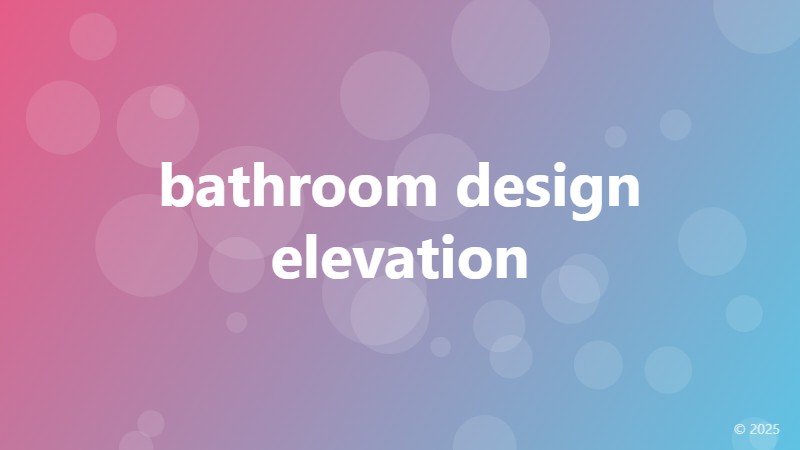bathroom design elevation

When it comes to designing a bathroom, one of the most crucial aspects to consider is the elevation. Bathroom design elevation refers to the vertical elements of the bathroom, including the walls, cabinetry, and fixtures. A well-designed bathroom elevation can make a significant difference in the overall look and feel of the space.
The Importance of Bathroom Design Elevation
A bathroom's elevation can greatly impact the ambiance and functionality of the space. A well-planned elevation can create a sense of openness and airiness, making the bathroom feel more spacious and luxurious. On the other hand, a poorly designed elevation can make the bathroom feel cramped and claustrophobic.
In addition to aesthetics, bathroom design elevation also plays a crucial role in terms of functionality. For instance, a bathroom with a high ceiling can accommodate larger fixtures and fittings, such as a freestanding tub or a rain showerhead. On the other hand, a bathroom with a lower ceiling may require more compact fixtures to avoid feeling cramped.
Key Elements to Consider in Bathroom Design Elevation
When designing a bathroom's elevation, there are several key elements to consider. These include:
- Walls: The height and material of the walls can greatly impact the overall look and feel of the bathroom. Consider using materials such as glass, marble, or tile to add visual interest and create a sense of luxury.
- Cabinetry: The type and placement of cabinetry can greatly impact the functionality of the bathroom. Consider using wall-mounted cabinets to create a sense of openness and make the most of available space.
- Fixtures and Fittings: The type and placement of fixtures and fittings, such as sinks, toilets, and showerheads, can greatly impact the overall look and feel of the bathroom. Consider using high-end fixtures to create a sense of luxury and sophistication.
Tips for Creating a Successful Bathroom Design Elevation
Here are some tips for creating a successful bathroom design elevation:
- Consider the overall style and theme of the bathroom. For instance, a modern bathroom may benefit from a sleek and minimalist elevation, while a traditional bathroom may benefit from a more ornate and decorative elevation.
- Think about the functionality of the bathroom. Consider the needs of the users and design the elevation accordingly. For instance, a bathroom used by young children may benefit from lower fixtures and fittings, while a bathroom used by older adults may benefit from higher fixtures and fittings.
- Don't forget about the lighting. A well-designed elevation can make the most of natural and artificial lighting, creating a bright and airy feel.
By considering the importance of bathroom design elevation and incorporating key elements such as walls, cabinetry, and fixtures, you can create a bathroom that is both functional and aesthetically pleasing. Remember to think about the overall style and theme of the bathroom, as well as the needs of the users, to create a successful bathroom design elevation.